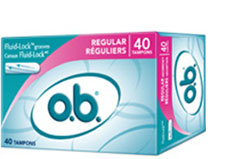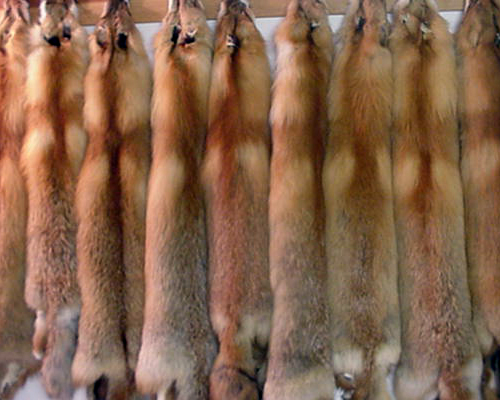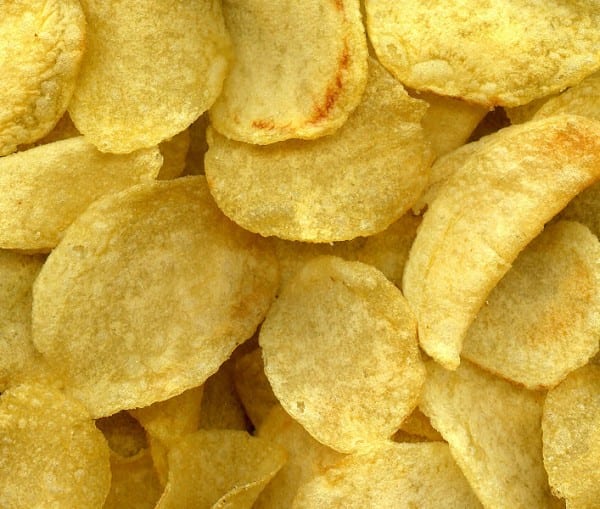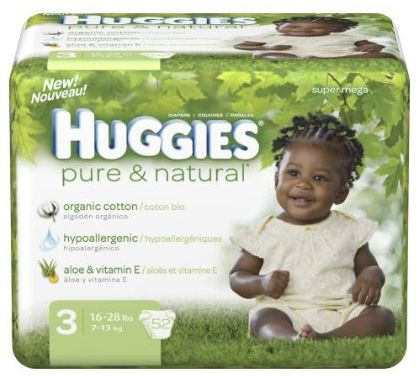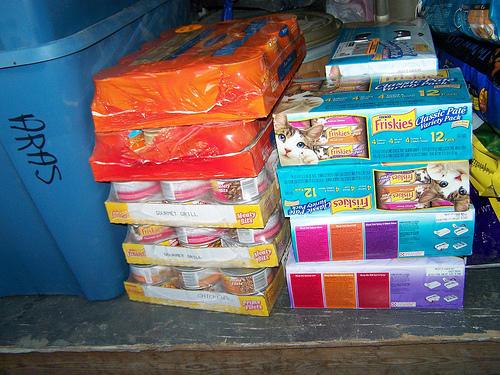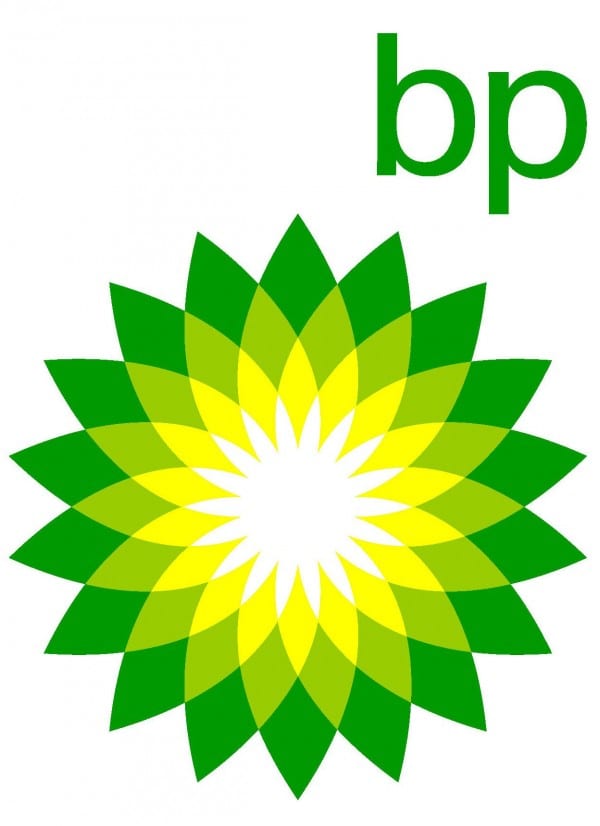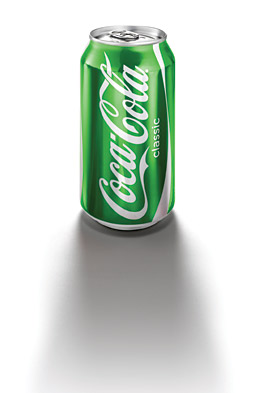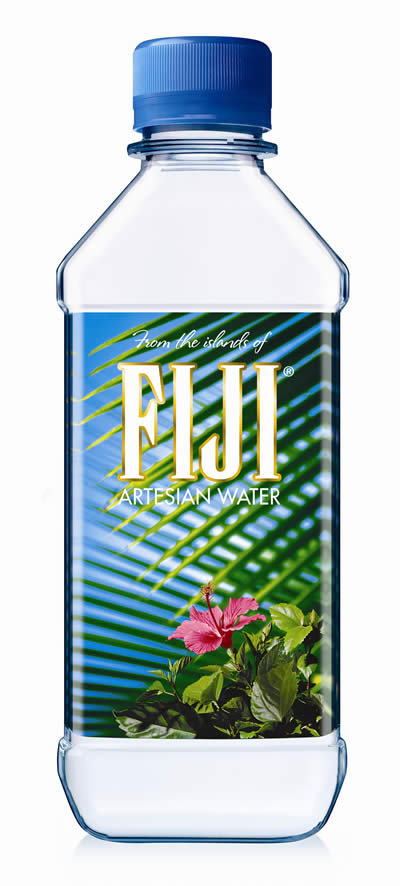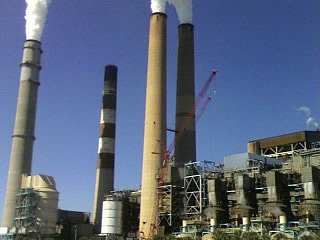Despite the recession, many consumers continue to spend a little extra on environmentally-friendly products. Purchases like organic food and nontoxic household cleaners help consumers feel empowered, healthy, and guilt free.
This relatively new behavior has some big corporations in a tizzy. Putting authentically nontoxic products on the market takes a lot of time and money. Those factors don’t cozy up with short-term gains, so many big companies are turning to greenwashing for a quick fix. They lure conscious consumers into a false sense of eco-security with leafy ads and green soundbytes. When it comes to backing up their claims, however, these companies prefer chicanery over hard facts.
We dug up 25 of the products most prone to greenwashing attempts. If you see these “green” products on the shelves, take heed. That green tint may have more to do with dollars than chlorophyll.
25. Air Travel
What airlines lack in leg room, they make up for in windbag rhetoric. EasyJet continues with their brazen claims that traveling on an easyJet plane is better for the environment than driving a hybrid car. And the makers of Airbus have been marketing themselves as a green industry leader, with advertisements showing jets filled with natural landscapes and flying in clear blue skies.
In 2005, British Airways boldly moved to offset its emissions. The project failed after BA admitted to offsetting a shaming total of 3,000 tons of emissions–less than 0.01% of its 27 million tons of emissions in that same two-year window, and substantially less than the carbon dispersed by a single day of the BA carrier flights between London and New York.
24. Toys
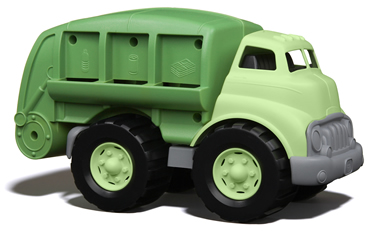
Image: Non-Toxic Tots
Parents are willing to spend more on items that they feel will keep lead paint and cadmium out of their child’s toy box. Widespread toy recalls in Europe and the U.S. have also pushed toymakers into greening their operations.
Toy giant Toys ‘R’ Us recently tried to cash in on increased awareness thing without actually detoxing their toys. They invited customers to buy Toys ‘R’ Us-branded reusable shopping bags. They also changed their signature “R” to include a recycle symbol.
While this may keep a plastic bag or two out of the landfill, a store-branded reusable bag isn’t what parents are looking for. They want toys that won’t poison their kids, harm the workers making them, or further damage the planet.
23. Software
IT spending isn’t what it was 10 years ago. As a result, many software vendors are trying on a coat of green to bolster their reputations. Big companies like Microsoft and Oracle are releasing products to help oil, gas, and utilities companies cut power usage and estimate emissions.
Last year, Microsoft added some minor power-saving features to its new Windows 7, including a low-light setting for your monitor. At the same time, the company pushed users to buy a new computer to run Windows 7. It didn’t hurt that it’s hard to install Windows 7 on your existing machine. No wonder Windows 7 didn’t win Microsoft any green awards.
22. Meat
Lots of companies advertise their meat as “wholesome,” “premium quality,” and “all natural.” Despite these labels, they source their meat from factory farms, feed their animals genetically modified (GMO) corn, and inject them with saltwater for a plumping effect.
Tyson, for example, got busted for slapping an “all natural” label on its chickens, even though they’re treated with antibiotics and fed GMO corn.
Hormel, meanwhile, has reduced more than 5 million pounds of packaging from its products and promotes “all natural ingredients” in its Natural Choice deli meats. But Hormel is not doing the real ecological work by reducing the enormous environmental footprint of the factory farms where its meat is sourced.
21. Personal Care and Beauty
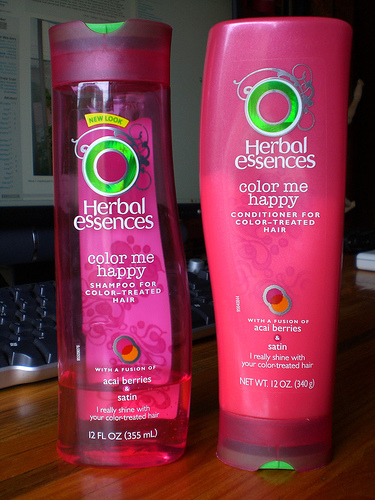
Image: Eliazar/Flickr
Natural shampoos and conditioners are a multi-million dollar market, but just how “natural” are they? Can they hold up to their claims for being good for your lovely locks and for the planet?
Take Clairol’s Herbal Essences. It has claimed a “truly organic experience” in the past. But lauryl sulfate, propylene glycol and D&C red no. 33 aren’t really that organic. For most women, it takes a little more than dermatitis-causing synthetic fragrances to generate shouts of “Yes! Yes! Yes!” while lathering up in a steamy shower.
20. Home Appliances
Image: Stuart Spivack/Flickr
Today, most EnergyStar-rated appliances actually will save you money and carbon. But that doesn’t stop manufacturers from blowing a little more hot air into your dishwasher and dryer. As with many greenwashing campaigns, the suspicion occurs in the omission.
In a recent campaign, GE claimed that they can reduce a family’s energy use and greenhouse gas emissions through GE technologies and household appliances. For some reason, GE didn’t share how much their appliances contribute to reducing monthly energy costs per home, or how many of their appliances are needed to see a measurable reduction. And while the image of a tree hugging a house in their commercial plays into a consumer’s eco-conscience, that tree isn’t saying if GE’s manufacturing operations are helping to deliver a carbon-neutralized appliance to your home.
19. Breakfast Cereals
The breakfast industry’s vocabulary includes flakes, tigers, loops, and leprechauns. Smoke and mirrors fit well into that kind of habitat. Cereal boxes are tattooed with claims of vitamins, antioxidants and fiber. But those Vitamin C-packed berries may also contain pesticide residue. Cereal maker Kraft, for example, produces a Natural Advantage line of cereal that includes “antioxidants” and “natural fiber.” Yet the company uses genetically modified corn, potatoes, and soy in its morning treats, as well as milk products from rBGH (growth hormone)-treated cows.
18. Tampons and Sanitary Pads
Tampons without applicators, like those sold by o.b., claim to save up to one pound of landfill waste per woman, per year by foregoing applicators. But they don’t mention the tons of herbicides, insecticides, fertilizers, fungicides, and other chemicals used to produce cotton crops in the United States. Sorry o.b., but there is nothing green about chemicals that cause cancer, birth defects or wildlife toxicity. Factor in the applicator, and you have all those bloated landfills, too.
Sanitary pads and many brand-name tampon applicators contain petroleum-based plastics that are not biodegradable. These generally end up in the landfill. How’s that for a monthly contribution?
17. Dairy
Dairy products fall victim to the “all-natural” curse. Those “natural” products may not contain pesticides, but the cows behind them may well dine on pesticide-laden, genetically modified crud for feed.
One of the most famous cases of dairy greenwashing involves Dean Foods, the country’s largest dairy company. It pulled green bait-and-switch with its Silk and Horizon-brand products. Dean downgraded several well-established Horizon products from organic to “natural,” an unregulated, relatively meaningless term. Dean didn’t inform major retailers of the switch. Instead, like a green ninja, they stealthily removed the word “organic” from the packaging without making any other changes, prompting national retailers like Target, to mislabel non-organic dairy products as organic. Habituated consumers continued to pay extra for products that used to be organic.
16. Fur
In a bold new ad campaign, the Fur Council of Canada (FCC) invites each of us to be environmental activists by—wait for it—buying more fur. The FCC is hoping that you will buy into their feel-good image that the fur industry is a vital part of the livelihood of rural families and an environmental protector. Somehow, you can make an “ecological choice in harmony with nature” by wearing an animal taken from the local ecosystem on your epidermis. Just put on blinders when you pass the fur farm where the animal was probably raised.
15. Hotels
Image: Lisa Brewster/Flickr
New York environmentalist Jay Westerveld first coined the term greenwashing after discovering some disingenuous hotel cost-cutting methods in 1986. The hotel industry had a common practice of placing green placards in each room to promote the reuse of towels. This would purportedly help the hotel save water and to consequently “save the environment.” Westerveld found that despite their promises, little effort had been put toward recycling by these offending hotels.
The trend is bigger than just towels. If you are an eco-tourist willing to pay for environmentally responsible accommodations, you may not be getting what you paid for. A recent independent study by TerraChoice Environmental Marketing found that 99% of all products and hotel services that are being labeled as “green” (by hotels themselves) do not live up to their claims. These so-called eco-hotels promise carbon-neutral practices and investment in carbon offsets. In reality, they only offset a fraction of their overall energy usage. Most hotels are looking for easy, inexpensive ways to add some green cred to their name, but do not pass that savings on to their guests, or reinvest in advancing their green practices often enough.
14. Household Cleaning Products
After groceries, household products are what most Americans are willing to pay a little more for if they’re both family-friendly and environmentally safe. Some manufacturers want to meet consumers halfway by selling products that are about 50% green.
Clorox, for example, is using common greenwashing images of a leafy forest to cash in on the green revolution and to promote their Green Works Cleaning Wipes. They advertise the wipes as being biodegradable, but what about the chemicals in the wipes, how well do they break down in the environment? And the plastic container that these wipes are packaged in is definitely not biodegradable.
13. Snacks
The claim of “all natural” enters the ring once again with snacks. Take Cheetos. They hope you’ll forget their signature day-glo orange puffs in favor of a high-fat, low-nutrient “natural” alternative containing high-fructose corn syrup, oil, and corn from genetically modified sources.
Then there’s Sunchips, which emphasizes its connection with its namesake by claiming that Sunchips from California are made with solar energy. The claim doesn’t mention, however, how much of the manufacturing energy used to the make the chips is offset by solar.
Sunchips and Cheetos parent company PepsiCo is indeed making slow inroads towards more sustainable snack production, but for now, the company’s greenwashing exceeds its implementation.
12. Disposable Diapers
Landfills are stuffed with disposable diapers. But that doesn’t prevent disposable diaper companies from trying out a good greenwash.
Huggies’ Pure and Natural line goes invites consumers to discover the “pure bliss of a diaper that includes gentle, natural materials.” But parents may be too sleep-deprived to see what’s lurking beyond the leaves and smiling baby on the package. Although organic cotton is “included” in the outer cover, the actual organic content remains a mystery. Also, Kimberly Clark won’t reveal whether the cotton is certified organic. For inexplicable reasons, the diapers also don’t include organic cotton on the inside surface of the diaper, which actually touches the baby’s skin. And while we are at it, what are the inner lining and core materials sourced from?
Huggies also wraps their Pure and Natural line in packaging boasting a laughable content of 20% post-consumer materials. True eco-companies are going big by using 100% and using unbleached cotton in their baby products. Huggies also does not sell a single biodegradable diaper.
Huggies might be the one dropping a load with these “pure and natural” diapers.
11. Paper Products

Image: D Sharon Pruitt/Flickr
What we once called “paper plates,” and avoided due to the fact that they were single use and going into the landfill, are now being promoted as green alternatives by some companies. GreenGlobe calls its land-fillers “eco-friendly biodegradable tableware.” GG’s website smacks of all things good and green in this world: their logo is green, their name is green, and their homepage images are of green mountains, fields and a few rainbows for good measure. Even if their products are as green as they say they are, the point remains that these plates are still single-use, disposable items just like those old, flimsy paper plates that left you wearing your meal on your lap.
10. Pet Food
Image: Purrs and Paws of A.R.A.S./Flickr
Shoppers buying organics for themselves are looking to feed Fido some of the same. But it’s not just the eco-minded consumer seeking out natural pet foods. Many mainstream consumers went searching after pets were left sick and dying from kibble manufactured in China. The pet food tested positive for both melamine and cyanuric acid, which was later found out to have been added as cost-saving bulking agents.
Some companies are responding to that demand with a coat of green sheen. Iams, for example, tests on animals. Many also promote their pet foods with meaningless claims of being “all-natural” and “healthy” while incorporating feed-lot meats and genetically modified grain. Buyer beware.
9. Laundry Detergents
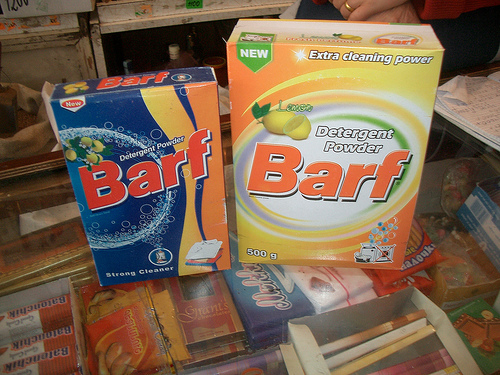
Image: Elmada/Flickr
How often have you seen images of freshly washed clothes waving in the sunshine, or a mountain stream following past pristine forests in a detergent commercial? Purex Mountain Breeze commercials feature just that, but also contain endocrine-disrupting synthetic fragrances and chemical ingredients like Benzenesulfonic acid, C10-C16-alkyl derivatives and Alcohols, C12-16, and ethoxylated (Isureth-4).
The Tide brand takes a different approach to greenwashing. Tide High Efficiency (HE) detergent is a highly concentrated cleanser that lives in a smaller bottle than the rest of P&G’s detergents. The bottle contains less plastic, and the liquid contains less water, making HE a relatively eco-sound choice. You’d think P&G would do the same with all of its other detergents, but it doesn’t. In fact, P&G’s Ariel washing power and liquid detergent is one P&G product that is banned in the USA due its historically high phosphorus (brightener) content. This detergent also contains benzene-based brighteners, which are classified as “toxic to not harmful” (i.e. they can be toxic) to fish, algae and crustaceans.
P&G continues to attempt a “green perception shift” with PUR, its global brand of water filter, through unproven statements about how their PUR products actually create safer drinking water sources and “help the environment.” So why isn’t P&G making at least one 100% biodegradable detergent as part of their commitment to clean water?
8. Mattresses

Image: Evil Erin/Flickr
The mattress industry is filled with confusing terms like “eco-friendly,” “natural” and “organic.” One company even claims that on their mattresses, you “sleep closer to nature.” Yet the production history of most mattresses is less about counting sheep and more like the Silence of the Lambs.
Chemical-free mattresses might be a pipe dream, since the U.S. Consumer Product Safety Commission instituted the national open-flame mattress flammability standard that went into effect in 2007. By law, you have to sleep on something flame retardant. Most companies accomplish this with chemicals, though some use rayon-based fiber pads as a flame barrier.
The chemistry doesn’t end there. Some companies use cotton, soy and bamboo-based faoms in their “green” mattress lines. Cotton, however, is the world’s most pesticide-intensive crop. It also requires heavy irrigation, taxing local water supplies. Textiles such as rayon and bamboo, while created from renewable resources, are pulped and imbued with hazardous chemicals that include caustic soda and sulphuric acid. The process impacts the sensitive regions where these trees and grasses are harvested, not to mention the workers exposed to those substances.
7. Biofuel
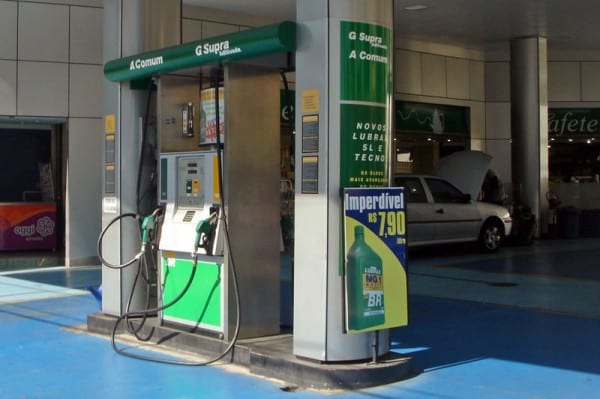
Image: Mario Roberto Duran Ortiz
The pursuit of alternative fuel choices is a priority for countries worldwide. Until then, we have pat-on-back fuels like ethanol to waste our time and money on. Ethanol truly sucks, but it goes with the American corn subsidies like peanut butter and jelly, which is why it is being promoted over other higher-yielding and truly sustainable fuel sources.
6. Cars
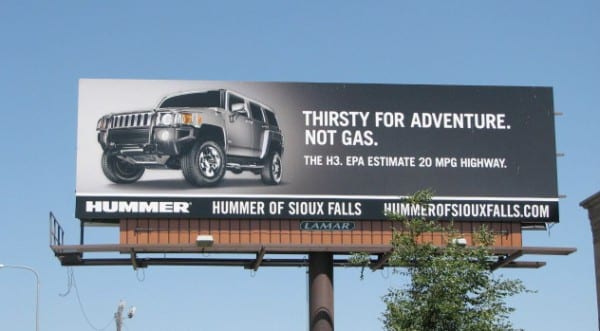
Image: Ecohuddle
You’ve seen the ads. Cars parked in green, foresty settings, as though they grew from the forest floor. SUVs rolling down a country road as fields of happy sunflowers crane their slender necks for a better view.
GM one example of a company that is proud to be green(washed). Its “Gas-friendly to Gas-free” campaign features a 2010 Yukon Denali Hybrid that tops out at a meager 21 mpg. Moreover, super-efficient vehicles represent a small percentage of GM’s yearly production, while they still engage heavily in the production of gas-guzzling cars and trucks. GM’s green marketing fails to note that the company currently produces fifty-one models that get less than 30 mpg, including thirty-five that get less than 20 mpg.
5. Gas
Energy companies are some of the worst offenders in the green sheen game. BP’s redesigned logo is one notorious example. The green stylized flower suggests that BP is a company that is both environmentally friendly and responsible.
Sadly, the only thing green about BP is their BS. Even as they claim to be concerned about emissions—they speak frequently about their efforts to develop “clean energy” sources–they continue to pull out of renewable research, even their own previous investments in renewable energy.
4. Soft Drinks
Soft drink production uses an enormous amount of water, and leaves behind tons of waste. Coca-Cola knows this. Its new “going-green” features stylish green cans and highlights the company’s water conservation efforts. Coca Cola has partnered with WWF to preserve seven of the world’s major rivers. It is also helping conservation projects in water-stressed areas throughout the world. Oddly, Coca Cola fails to mention is how these sensitive water sources became stressed in the first place. Hint: it rhymes with “joke.”
It takes about 2.5 liters of water to produce just one liter of product at Coke’s bottling plants. Coca-Cola sells 1.5 billion beverages a day in over 200 countries. In 2006, Coca-Cola and its bottlers used 80 billion gallons (290 billion liters) of water to produce beverages — equivalent to one-fifth of the daily water usage of the U.S. Approximately 40% of that went into producing their popular drinks like Coke, Sprite and Fanta, while the other 60% was consumed by the firm’s supply chain and the production of ingredients, including the water-intensive process of growing sugar and corn for corn syrup.
We haven’t begun to mention the ungodly amounts of plastic waste the company’s plastic bottles produce. Try harder, Coke.
3. Bottled Water
More than 9 billion gallons of water made it into little plastic bottles in 2007, dousing providers with almost $12 billion in revenues. Industry giants like Nestlé and Fiji, are lining up for a fresh coat of green to stay in the eco-minded dollar game. Nestlé’s repeated claims that “bottled water is the most environmentally responsible consumer product in the world” have garnered complaints filed under the Canadian Code of Advertising Standards by the Friends of the Earth Canada, the Polaris Institute and Ecojustice.
FIJI water, the most-imported brand in America, deserves a Shady Water Company award. For one, the island of Fiji’s military junta protects the brand at the expense of Fijian citizens. Most people in Fiji don’t have safe drinking water, thanks to FIJI’s habit of exporting it. Typhoid outbreaks are common on the island. The company uses plastic made in Chinese diesel-powered plants to produce its thick rectangular bottles.
Yet Americans–including celebrities and Barack Obama–continue to guzzle the stuff, thanks in part to pretty packaging and a $5 million “Fiji Green” marketing campaign.
Um, FIJI and Nestle? Your plastic is showing.
2. Clothes

Image: VisitSweden/Flickr
We could write a book about greenwashing in the clothing industry, but we’ll stick with three prominent examples:
1. Back in 2002, Cargill, the world’s biggest producer of corn, announced a revolutionary new fleece material made from corn sugar, not the traditional petroleum. The catch: Cargill, which produces genetically modified corn, makes the fleece out of its own frankenfood crops. No wonder it touted the new fleece as a “green” alternative—it had money written all over it. Organic clothing retailer Patagonia violently pulled out of a partnership with Cargill after finding out about its affinity with woven mutant corn.
2. In an unrelated clothing coup last year, the FTC charged bamboo clothing manufacturers with making false green claims. The manufacturers advertised their rayon clothing as “bamboo fiber” clothing (rayon consists of fibers processed with toxic carbon disulfide. It is bamboo fiber’s drug-addled step-cousin). They also made suspicious claims about manufacturing their clothing “using an environmentally friendly process that retains the natural antimicrobial properties of the bamboo plant and (being) biodegradable,” according to the FTC.
3. Also in 2009, Banana Republic launched an “It’s Easy Being Green” promotion that requires using their reusable bag to get 10 percent off your purchases. Reusable shopping bags are green, yes? Not always so, and especially not when Banana Republic is manufacturing thousands of bags made from conventional cotton that takes tons of pesticides to produce. BR also required consumers to buy a new bag to be part of the promotion, denying smart eco-minded shoppers who brought their own.
1. Coal
The term “clean coal” is more of a collective guilt assuager than an environmental fact. Coal is not sustainable. The burning of coal emits millions of tons of carbon dioxide into the atmosphere every year. Yet it’s abundant, the infrastructure is there, and energy companies continue to profit off it, painting pastoral scenes on their smokestacks for good measure.
Fact is, there’s nothing clean or “new” about coal. Continuing to promote coal as a clean energy source is contemptible when you compare it with wind, solar, water, and hydrogen power methods. Coal needs to be put out pasture–maybe one of those sunny pastures featured in GM’s greenwashed SUV ads.





